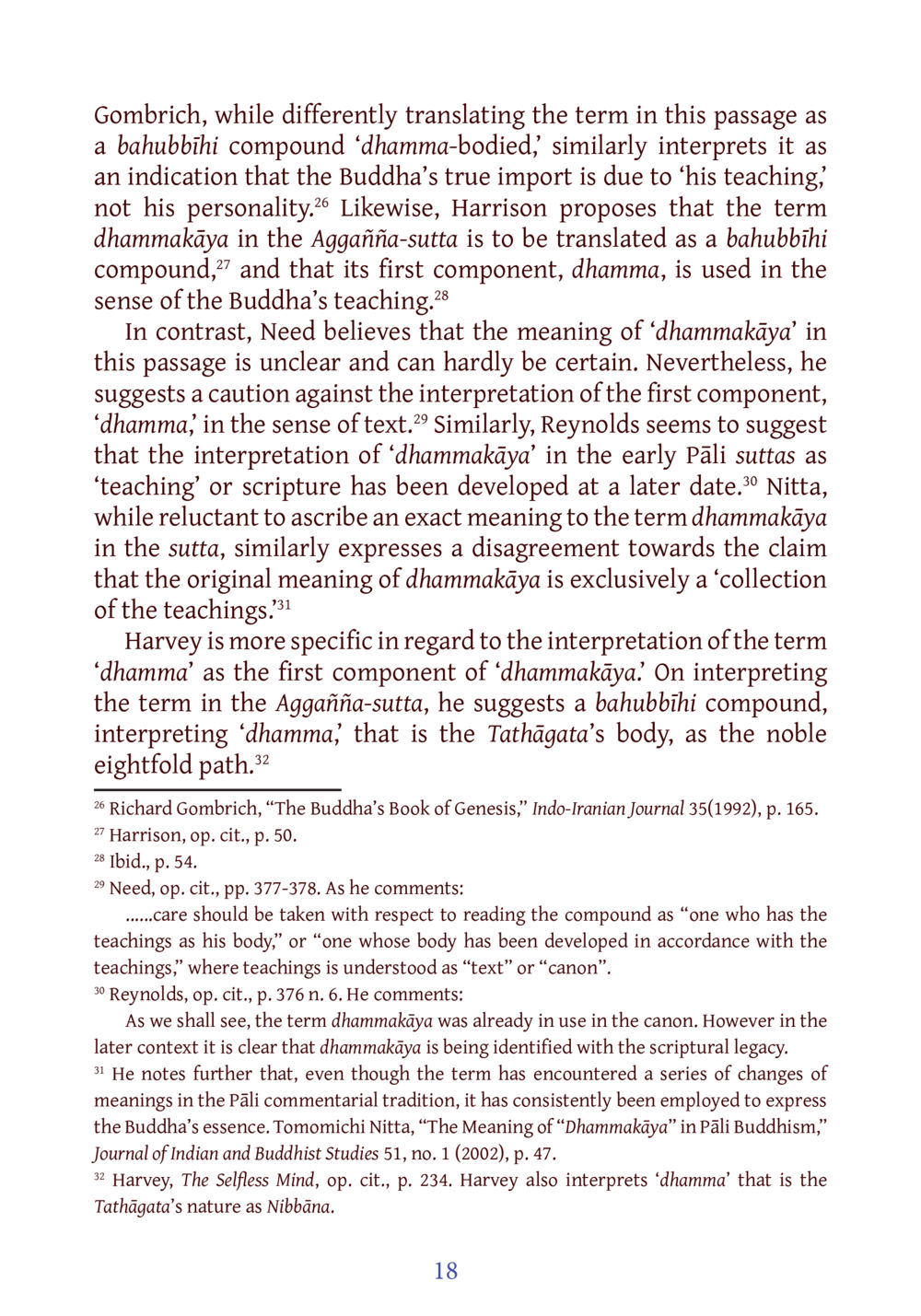Interpretations of Dhammakāya in Early Pāli Texts : หน้า 39/141
DIRI Journal : หน้า 39/141 Exploring different interpretations of the term 'dhammakāya' in relation to Buddha's teachings and personality in early Pāli suttas.
0 ครั้ง

สรุปเนื้อหา
This text delves into various scholars' interpretations of the term 'dhammakāya' within the context of early Pāli suttas. Gombrich views it as 'dhamma-bodied,' emphasizing that the essence of the Buddha lies in his teachings rather than his personality. Harrison supports this view, while Need expresses uncertainty about the clarity of 'dhammakāya.' Reynolds indicates that the teaching or scripture interpretation likely emerged later, and Nitta remains cautious against limiting it to the teachings only. Harvey suggests that 'dhamma' represents the noble eightfold path. Overall, the discourse points to the complexity and evolving interpretations of 'dhammakāya' across different scholars in the Pāli tradition, reflecting the nuanced understanding of the Buddha's essence and teachings. More information can be found at dmc.tv.
หัวข้อประเด็น
-Interpretations of Dhammakāya
-Scholarly Perspectives
-Buddha's Teachings vs Personality
-Evolution of Meanings in Pāli Tradition
ข้อความต้นฉบับในหน้า
หน้าหนังสือทั้งหมด













































































































































